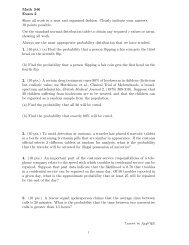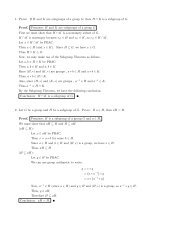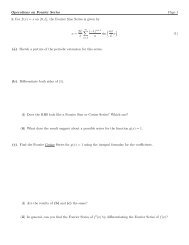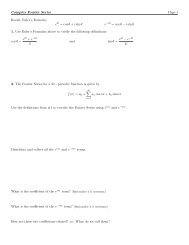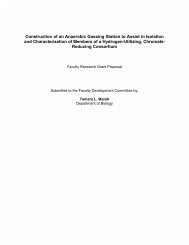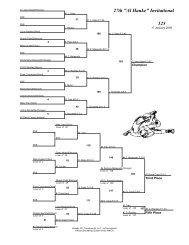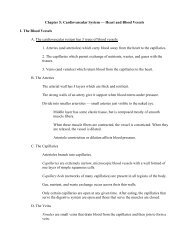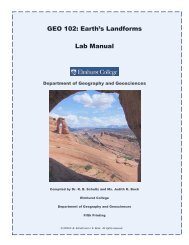Free Executive Summary - Elmhurst College
Free Executive Summary - Elmhurst College
Free Executive Summary - Elmhurst College
Create successful ePaper yourself
Turn your PDF publications into a flip-book with our unique Google optimized e-Paper software.
Learning to Think Spatially: GIS as a Support System in the K-12 Curriculum<br />
http://www.nap.edu/catalog/11019.html<br />
SPATIAL THINKING IN EVERYDAY LIFE, AT WORK, AND IN SCIENCE 75<br />
Representative benthonic<br />
foraminifera typical of inner<br />
and outer shelf biofacies<br />
and upper bathyal<br />
biofacies in the Gulf of<br />
California.<br />
FIGURE 3.20 Ascribing meaning to the shape of a natural object: carbonate-shelled microfossils. SOURCE:<br />
Kennett, 1982. Reprinted by permission of Pearson Education, Inc., Upper Saddle River, N.J.<br />
inferring the influencing processes. The key questions are: What processes or forces could have<br />
acted upon this mineral, landform, fossil, or organism (the fossil before it died) to cause it to have<br />
this shape? What function could this form have served in the life of the organism?<br />
The novice generally begins by applying learned rules of thumb. At the expert level, this<br />
thought process involves reasoning from first principles about the connection among form, function,<br />
and history and doing so in the context of an expert knowledge base about the normal<br />
characteristics of the class of objects under study. Students, as novices however, may misunderstand<br />
fundamental processes (Figure 3.22). The ability to reason from first principles well is one of<br />
the abilities people have in mind when they say that someone has good “geologic intuition.”<br />
Copyright © National Academy of Sciences. All rights reserved.



